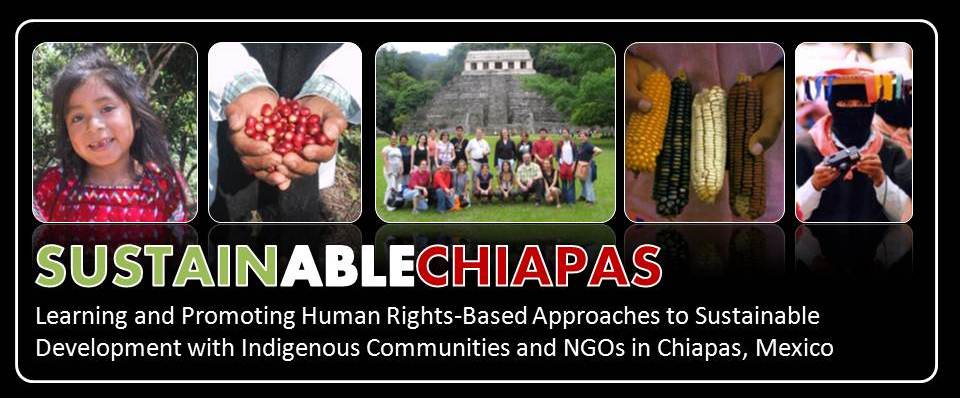The first impression received when arriving in a new place is the airport. Tuxtla Gutierrez, the capital of Chiapas, has a white, beautiful and modern airport. The second impression is the people. Talking and observing the Chipanecos you can find, right the way, the amazing culture they have, warm and cordial, make you feel in home. I took a cab to San Cristobal de las Casas, located one hour to the south of Tuxtla Gutierrez, and the view from the ride is gorgeous. Mountains, waterfalls and a beautiful valley with a blue river is the welcoming crew. San Cristobal de las Casas is a beautiful town with colonial architecture that is becoming more touristic in the past years. The natural resources, the diversity of the people, culture and food make this town an excellent vacation destination. However, this beautiful scene changed from colorful to black and white once I started looking through the eyes of the Chiapenecos.
Chiapas needs to be seen by its own reality of oppression that came from years of isolation and poverty. The southern most state in Mexico, about one quarter of its population are of Mayan descendant. Chiapas a poor state with rich natural resources, in other words a rich land with poor people. The population has grown enormously, from one million in 1940 to two million in 1980 to four million in 2005. Ironically it has one of the highest gross birthrates at 22%,but also takes the first place in child mortality at 25%. The economy is based in agriculture and minerals. They produce 13% of country's maize, 54% of its hydroelectric, power, 5% of the nation's timber, 4% of its beans, 13% of its gas, and 4% of its oil, Despite its richness of natural resources, Chiapas is an economically underdeveloped state. Highest rate of unemployment, below average literacy, and a high infant mortality rate. Only 11 percent of adults earn what the government calls moderate income of at least $3,450 per year (versus 24 percent nationally); less than 50 percent of households have running water (versus 67% nationally); and only 14 percent have (versus 45% nationally). It seems that Chiapas has become, over the years, the trash yard of Mexico. Amazingly, the region is making it’s own attempt at overcoming the corruption of the government and its own oppression. Starting, in 1994, the same year that NAFTA was signed, an uprising led by the Zapatista movement reminded the world that indigenous people are still struggling for their rights-even 500 years after the Spain conquest. Today, the struggle for indigenous autonomy and to create peaceful communities free from poverty and oppression continues.

The indigenous communities have create different sustainable projects, with the help of the international community, that is aiding in the development of economic, social and cultural autonomy. The international community is playing a huge role in training and maintaining these communities. There is still a lot to accomplish, for example in education, health issues, poverty, land rights.But the one most disturbing is the violence that this people are exposed to, just because they are human beings that want to fight for the right to live a descent life in the land that belongs to them. It was very shocking to see how many of them have been victims of violence and massacres.
Even worse, the paramilitary groups who supported by the government and who are the authors of these crimes, were recently released from jail and set free of charges. Although, the people from this small part of the world, keep struggling for their rights, the beauty of their transparent hearts brings a hope that one day “Father God and Mother God” will do justice in this land that once were forgotten but now is in the interests of many for the natural resources.
http://www.organicconsumers.org/chiapas/
http://en.wikipedia.org/wiki/Chiapas#Major_communities


